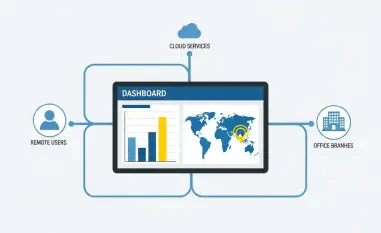In an era where digital infrastructure serves as the backbone of countless organizations, the sharp rise in cybersecurity threats targeting public-facing applications has become a pressing concern for security professionals worldwide. Recent reports reveal a staggering increase in attacks exploiting vulnerabilities in on-premises Microsoft SharePoint servers through a specific exploit chain known as ToolShell. This alarming trend, observed in the third quarter of this year, underscores the growing audacity and speed of threat actors who capitalize on newly disclosed flaws. With over 60% of incident response engagements tied to public app exploits, compared to a mere 10% in the prior quarter, the urgency to address these vulnerabilities cannot be overstated. As attackers leverage critical flaws to gain initial access, the broader implications for industries like government, defense, and academia are profound, setting the stage for a deeper exploration of this evolving threat landscape.
Rising Exploits in Public-Facing Applications
The surge in attacks on public-facing applications marks a significant shift in the tactics employed by malicious actors, with ToolShell emerging as a central tool in their arsenal. Data from recent incident response engagements indicates that nearly 40% of these cases are linked directly to ToolShell activity, exploiting two critical vulnerabilities identified as CVE-2025-53770 and CVE-2025-53771. These flaws allow unauthorized access to internet-facing SharePoint servers, providing a gateway for further malicious actions. The public disclosure of this exploit chain in mid-July triggered an immediate spike in attacks, with most related incidents occurring within just ten days of the revelation. This rapid exploitation highlights how quickly threat actors can weaponize newly discovered vulnerabilities, often outpacing the ability of organizations to deploy patches or implement defenses, and emphasizes the critical need for heightened vigilance in monitoring public-facing systems.
Beyond the initial breach, the involvement of sophisticated threat groups adds another layer of complexity to this issue. Microsoft has pointed to Chinese-based actors, such as Linen Typhoon and Violet Typhoon, as key players in targeting these ToolShell vulnerabilities. Their focus appears to be on high-value sectors, including government, defense, academia, and non-governmental organizations, suggesting a strategic intent behind these campaigns. The ability of such groups to exploit public apps for espionage or disruption underscores the geopolitical dimensions of cybersecurity threats. Unlike random opportunistic attacks, these coordinated efforts often aim at long-term access and data exfiltration, posing a persistent challenge to affected entities. This trend illustrates the importance of not only addressing technical vulnerabilities but also understanding the motivations and capabilities of adversaries behind these exploits.
Consequences of Lateral Movement and Ransomware
One of the most concerning aspects of public app exploits like ToolShell is their role as an entry point for broader network compromise, often enabling lateral movement within systems. A notable incident response case revealed how attackers, after breaching a SharePoint server, deployed credential-stealing malware that spread to an internal database server. This exploitation of trusted relationships between systems allowed threat actors to deepen their foothold, ultimately leading to a ransomware attack weeks later. Such scenarios demonstrate the cascading effects of initial access through public applications, where a single breach can compromise entire networks. Network segmentation emerges as a vital defense strategy in this context, limiting the ability of attackers to navigate freely within an environment and mitigating the potential damage from such incursions.
Ransomware, while slightly less dominant in recent incident response data at 20% compared to 50% in the prior quarter, remains a formidable threat following initial exploits like ToolShell. New variants such as Warlock, Babuk, and Kraken have surfaced alongside established names like Qilin and LockBit, with Qilin expected to pose significant risks through the end of this year unless disrupted. A particularly intricate case involved the Storm-2603 threat group, which employed overlapping tactics using both LockBit and Warlock ransomware, showcasing the evolving sophistication of these actors. The interplay between initial access through public app vulnerabilities and subsequent ransomware deployment illustrates a multi-stage attack model that maximizes damage and financial gain. This persistent threat underscores the necessity for organizations to adopt comprehensive security measures that address both entry points and the potential for escalated attacks.
Strengthening Defenses Against Evolving Threats
Reflecting on the rapid exploitation of ToolShell vulnerabilities after their disclosure, it becomes evident that threat actors have adapted with alarming speed to capitalize on unpatched systems. The urgency with which attacks unfolded within days of public awareness highlighted a critical gap in organizational response times. Looking back, the significant uptick in public app exploits during the third quarter served as a stark reminder of the importance of timely patching and robust monitoring. As state-sponsored groups and ransomware operators alike targeted internet-facing systems, the multifaceted nature of these threats demanded a proactive stance from defenders.
Moving forward, organizations must prioritize actionable strategies to safeguard their digital assets against such sophisticated attacks. Implementing rigorous network segmentation can limit lateral movement, while continuous monitoring of public-facing applications ensures early detection of suspicious activity. Additionally, fostering a culture of rapid response to vulnerability disclosures can close the window of opportunity for attackers. As the cybersecurity landscape continues to evolve, investing in advanced threat intelligence and collaboration across sectors will be crucial to staying ahead of malicious actors. These steps, grounded in the lessons learned from recent incidents, offer a pathway to resilience in an increasingly hostile digital environment.













